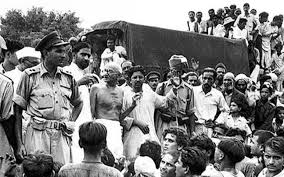Syllabus
GS1: The Freedom Struggle — its various stages and important contributors/contributions from different parts of the country.
Context:
Champaran Satyagraha was launched by Mahatma Gandhi in April 1917, and this year marks the 108th anniversary of the movement.
Champaran Satyagraha (1917) — First Civil Disobedience Movement
- On February 27, 1917, Raj Kumar Shukla on behalf of tenants of Champaran sent a letter to Gandhiji requesting him to visit Champaran and see their deplorable condition.
- On April 17, 1917, Mohandas Karamchand Gandhi arrived in Champaran, Bihar, responding to desperate pleas from oppressed indigo farmers, particularly Rajkumar Shukla, who suffered under the exploitative Tinkathia system.
- This moment marked Gandhi’s first major civil disobedience movement in India, following his transformative activism in South Africa, where he pioneered Satyagraha in 1906.
Gandhi’s Involvement:
- Gandhi, along with Rajendra Prasad, Mazharul Haq, Mahadev Desai, Narhari Parekh, and J.B. Kripalani, arrived in Champaran to investigate the situation.
- Upon arrival, the authorities ordered him to leave the area.
- Gandhi defied the order, choosing to face punishment rather than to comply. This act of passive resistance or civil disobedience was a novel method at the time.
- After Gandhi’s defiance, the authorities retreated and allowed him to conduct an inquiry into the matter.
Reforms and Legislation:
- Gandhi presented testimonies from 8,000 farmers.
The Committee’s recommendations included:
- Abolition of teenkathia
- Banning abwab
- Compensation for illegal dues
• These led to enacting the Champaran Agrarian Act (1918).
End of European Planters’ Control:
- Within a decade, the European planters left Champaran. Gandhi had won the first battle of civil disobedience in India.
Mains question
What was the significance of Champaran movement in India’s journey of freedom struggle?

